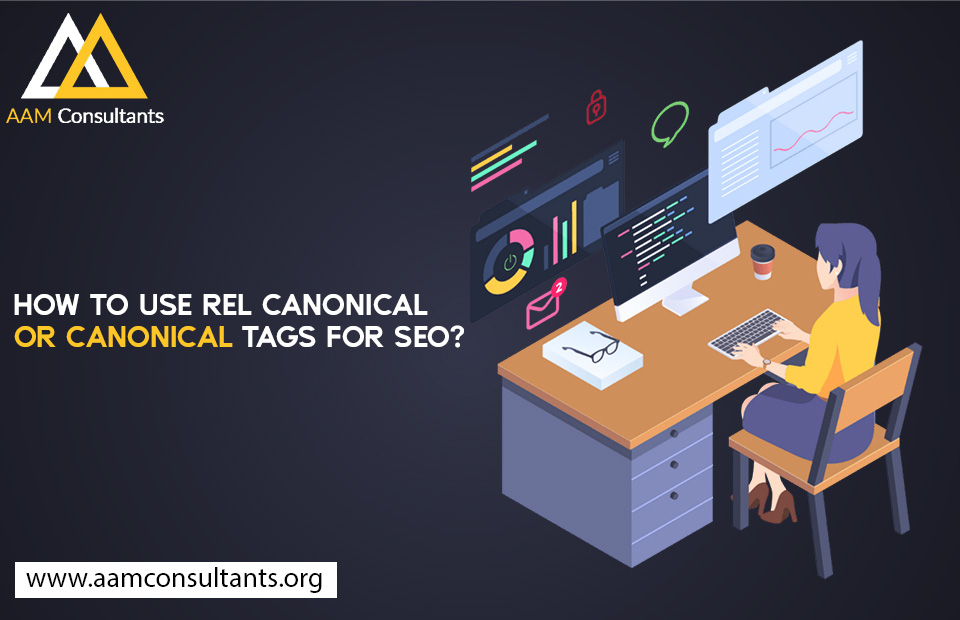The wrong use of canonical tags could be sabotaging your SEO efforts in the past and present. This is because canonical tags are a well-known advanced SEO technique/strategy for dealing with duplicate content or a page that has several URLs. So, if you don’t know how to employ a canonical tag correctly, you’re putting your SEO in jeopardy.
Canonical Tags have been around for a while, and you’d think that most – if not all – SEO professionals around the world have a good understanding of them. However, reality differs from fiction in that some SEOs still require assistance with their canonical tags — which is remarkable in and of itself.
Before you use the canonical tag, you need to understand what a canonical URL is, because the two aren’t the same thing — at least not at first appearance.
Hire AAM Consultants for link building and SEO Services.
What Is A Canonical Tag?
Canonical tags, often known as rel=”canonical,” are a technique of informing search engines that a given URL is the master copy of a page. They allow you to specify a page’s canonical URL. By identifying the “canonical” or “preferred” version of a web page, webmasters can avoid conflicts with duplicate content.
Importance of canonical tag for SEO?
To a search engine, a canonical tag provides the source URL (or original content page) of a specific webpage. Canonical tags are used to declare a single page as its own source or to refer to the source / originating page of duplicate pages. These tags are used by search engines to apply a ranking value to that content and to choose which page to return to a user within search results. For example, suppose you have a product that resides at:
http://www.tags.com/
However, the identical product is also available at:
http://tags.com/
These are viewed as two separate pages by search engines like Google. This can be troublesome since search engines may not be able to determine which page is the most useful to return to the user.
Duplicate content is frowned upon by Google. It makes it more difficult for them to make a decision:
- Which version of a page should be indexed (just one!)
- For relevant inquiries, which version of a page should be ranked.
- Whether “link equity” should be consolidated on a single page or distributed over different editions.
Duplicate content can also have an impact on your “crawl budget.” As a result, Google may waste time crawling numerous versions of the same page rather than uncovering other valuable information on your site.
How to use a rel canonical tag?
When you suspect you might have a duplicate content problem but don’t want to remove one version of the material or execute a 301 redirect, you can use the rel=canonical tag. Here are some examples of when you might wish to use it.
On your website, the same content appears under various categories or tags.
You’ve created a dynamic page that allows users to access the same content using a variety of filtering and sorting choices. Ecommerce sites, for example, frequently use multiple URLs to display the same content.
You have several websites and utilise the same content on each of them.
You can syndicate your own material or allow other sites to syndicate yours. In any situation, the republishing site should utilise the rel=canonical tag to redirect link juice back to the original.
How to add or check canonical tags?
Applying canonical tags
- If you have multiple pages with the same or similar content, you may use canonical tags to tell search engines which URL to index.
- You’ll need access to your webpage’s HTML to use a canonical tag.
- link rel=’canonical’ href=” “/> The canonical tag is a fragment of code that looks like this:
- The canonical tag will point to the version of the URL that you prefer.
- Although Google will crawl both URLs, it will only index one, ensuring that you are not penalised for duplicating content.
Canonical tag implementation?
- Right-click on your webpage to see the source code.
- Control F and type ‘canonical’ into the search box.
- Make sure the URL part of href= is set to the URL of the page you want to be indexed.
Final Thoughts
Canonical tags aren’t all that difficult to understand and implement. Initial comprehension of these concepts is difficult.
Just keep in mind that canonical tags are not a directive, but rather a signal for search engines to recognise. In other words, they may choose a canonical that is different from the one you have declared yourself.
In Google Search Console, you may use the URL Inspection tool to see both the user-declared canonical URL and the canonical URL that Google has chosen for you.




